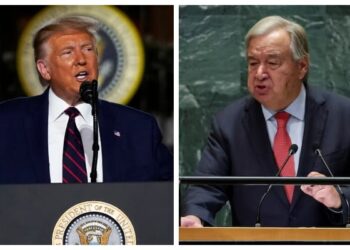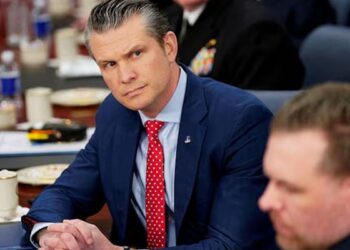- Musk announces plans to decrease his government work commitment.
- DOGE was initiated by Trump through an executive order on his first day in office.
- Cabinet secretaries are expected to reclaim authority after Musk steps back from his DOGE responsibilities.
WASHINGTON: Following Elon Musk’s impending reduced role in the Department of Government Efficiency (DOGE), members of former President Donald Trump’s cabinet may seek to regain control over budgets and staffing decisions, according to two government insiders.
The Department of Government Efficiency, established by an executive order on Trump’s first day in office and led by billionaire Musk, has pursued aggressive measures aimed at downsizing the federal workforce and reducing the deficit. These actions have involved widespread layoffs, canceling contracts, and cutting down services offered to Americans.
On Tuesday, Musk revealed his intention to limit his government involvement to just one or two days a week to refocus on his struggling car company, Tesla, raising uncertainty about the agency’s future initiatives. His current role as a special government employee would likely end in May.
Musk has provided political insulation to the White House while DOGE implemented cost-cutting measures that have garnered significant backlash from career government employees. Cabinet members have reported feeling that DOGE’s personnel has overstepped their traditional authority to hire and fire staff, causing reluctance among some secretaries to comply with DOGE directives.
In recent weeks, tensions within Trump’s administration have been high concerning the level of authority given to Musk. During a cabinet meeting in March, Secretary of State Marco Rubio openly accused Musk of undermining USAID, while Transportation Secretary Sean Duffy confronted him about proposed layoffs affecting air traffic controllers, which raised aviation safety concerns, according to sources familiar with the discussions.
Cabinet members have persistently advocated for more control over budgetary decisions, and with Musk’s lesser visibility as a counterbalance, their efforts to enforce specific spending cuts rather than overall reductions are likely to progress with fewer challenges, as stated by the insiders, who requested anonymity to speak on the internal matters.
The most dramatic change could be the enhanced authority of the cabinet itself, allowing agency heads to have the final say on which initiatives move forward. This would solidify their central role in federal efficiency and fiscal strategies.
With Musk stepping back, the cabinet will gain more independence and will not require his approval on every decision, according to one of the sources.
The changing dynamics of leadership within DOGE may also prompt a reevaluation of the roles many young engineers initially recruited by Musk. Their influence might wane, and they could face heightened scrutiny regarding their qualifications and authority, given their limited government backgrounds.
White House spokesperson Harrison Fields dismissed claims that Musk’s reduced involvement indicates a shift in DOGE’s direction or influence.
“DOGE is structured in such a way that the Cabinet already possesses autonomy over spending cuts. DOGE has simply been a component of the agency,” Fields said. “There will be no changes; DOGE is functioning smoothly and is effectively aligning with the President’s agenda,” he added.
Observers of DOGE, including both supporters and detractors, predict that the push for budget cuts will remain vigorous despite Musk’s transition to part-time involvement. They point to executive orders setting ongoing changes in motion, paired with cabinet officials supporting Musk’s agenda.
“Much of what DOGE has initiated has been integrated into various agencies and is likely to continue,” said Nick Bednar, an associate professor of law at the University of Minnesota. He has monitored government layoffs and believes that agencies are unlikely to reverse DOGE’s reductions. “It’s like a train that has already left the station—it’s tough to stop,” he commented.
‘Mostly done’
Musk, a prominent supporter of Trump’s 2024 campaign and the driving force behind the government’s restructuring, has placed trusted allies in crucial government positions and sent former staffers from X and SpaceX to oversee significant workforce reductions across federal agencies.
His involvement has extended to various White House initiatives, including a federal hiring freeze, multiple agency buyout offers, and a directive for agencies to formulate plans to downsize their workforces. His once-enforced requirement for federal employees to report achievements in lengthy weekly emails has mostly subsided among cabinet officials.
“The bulk of the work needed to establish the DOGE team and align it with government financial objectives is largely completed,” Musk stated on Tuesday.
As Musk shifts his focus back to his businesses, DOGE will need to identify a successor. One potential candidate is Amy Gleason, who was appointed acting administrator by the White House in February. She noted in a court document on March 19 that Musk is not actively working at DOGE, a claim Trump has contradicted by frequently asserting Musk’s leadership role.
However, the specifics of Musk’s daily responsibilities remain unclear and will need clarification as his departure approaches.
Tom Schatz, a supporter of DOGE’s mission and president of the watchdog group Citizens Against Government Waste, suggested that Musk’s exit might actually enhance DOGE’s effectiveness.
“Musk tends to attract attention wherever he goes,” he said. “With him stepping back, it may actually operate more effectively due to reduced visibility.”





